A New European Digital Landscape - Day 1 of Digitalize and Automate
After last year’s roaring success, the second edition of Digitalize and Automate has a lot to live up to. Having evolved into the number one ITSM event in Europe, it now attracts 1800 attendees from 22 countries and features a number of influential thought leaders delivering valuable insight over the course of the two event days. In this post, we’ll take a look at some of the key points that were delivered throughout the day, and what the most important takeaways were.
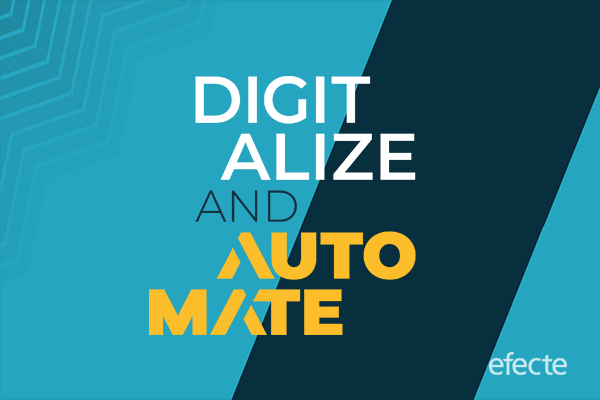
Setting the Scene
Reidar Wasenius, Chief Creative Officer at Breaks Finland, served as event moderator for the second year running. Not only did he skillfully handle the various speaker introductions, but he also went on to deliver a guided ‘brain-stretching’ session during the lunch hour to provide a welcome break for the mind.
Reidar focused on the theme that would bring together the various sessions throughout the day: How we can all contribute to the accelerated growth of digital business in Europe. He highlighted that the digital customer experience is critically linked to efficiency, financial performance, and – ultimately – satisfaction. “This event is all about understanding where we are today, why we should be growing, and why digital growth in Europe is in fact critical for the entire technology world,” he explained.
Efecte CEO Niilo Fredrikson took on from there, framing the day with an introduction where he highlighted that Europe still remains behind the curve in the race for the digital footprint. Our focus now is sustainable economic growth in Europe, and in the world. The stakes are high, as the technology landscape is changing so quickly and we need to work together to build an opportunity for Europe to claim a strong place on the digital world stage.
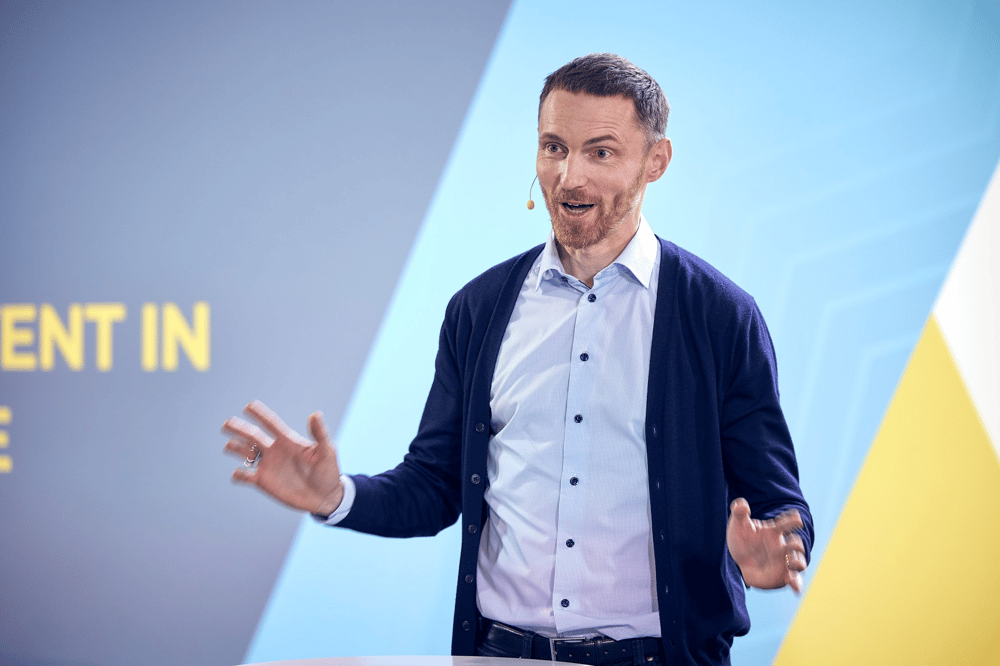
Niilo pointed out that America continues to outperform the rest of the world by owning 74% of digital platforms, as well as Asia with 22%. For Europe, the relative share is the same as last year, at 3%. “Europe has a responsibility to contribute more,” he explained. “If we don’t, we risk becoming a digital ‘colony’ where we lead our lives on digital ecosystems controlled by corporations and laws that are very different from ours. We need to step up and shape the future of the digital era in Europe.”
The alternative path leads to what Niilo describes as a digital ‘paradise’. This is a future where our values can be embraced and shared with the world, and there is hope for us to make this happen. We already see a wide range of SaaS and e-commerce unicorns originated in Europe, with innovative platforms designed to make life and business better. Our share of unicorns this year is 37 of 291, compared to 15 of 175 in 2020. This year, venture funding in Europe has also grown at the fastest rate ever.
The key to this, according to Niilo, is collaboration. The activity is there, the initiatives are there, governments and business communities are working together – to build new initiatives and support the future of Europe as a power in the global marketplace. We have a huge opportunity for sustainable growth and improvement. And while this will help us in Europe, it will ultimately benefit the whole world. This is why we are passionate about building and nurturing the European digital industry.
From Europe with Love – How to grow and win in a competitive industry
Johanna Småros, co-founder Relex Solutions, discussed what retail optimization looks like in the modern digital world. Supermarkets may seem like a low-tech solution, she argued. But what’s required to make the tens of thousands of groceries available to us on the supermarket shelves? The many thousands of good flows create a complex matrix of continuous forecasting requirements, especially in light of promotions, seasonality, shelf life, and many other aspects – all of which need to be optimized.
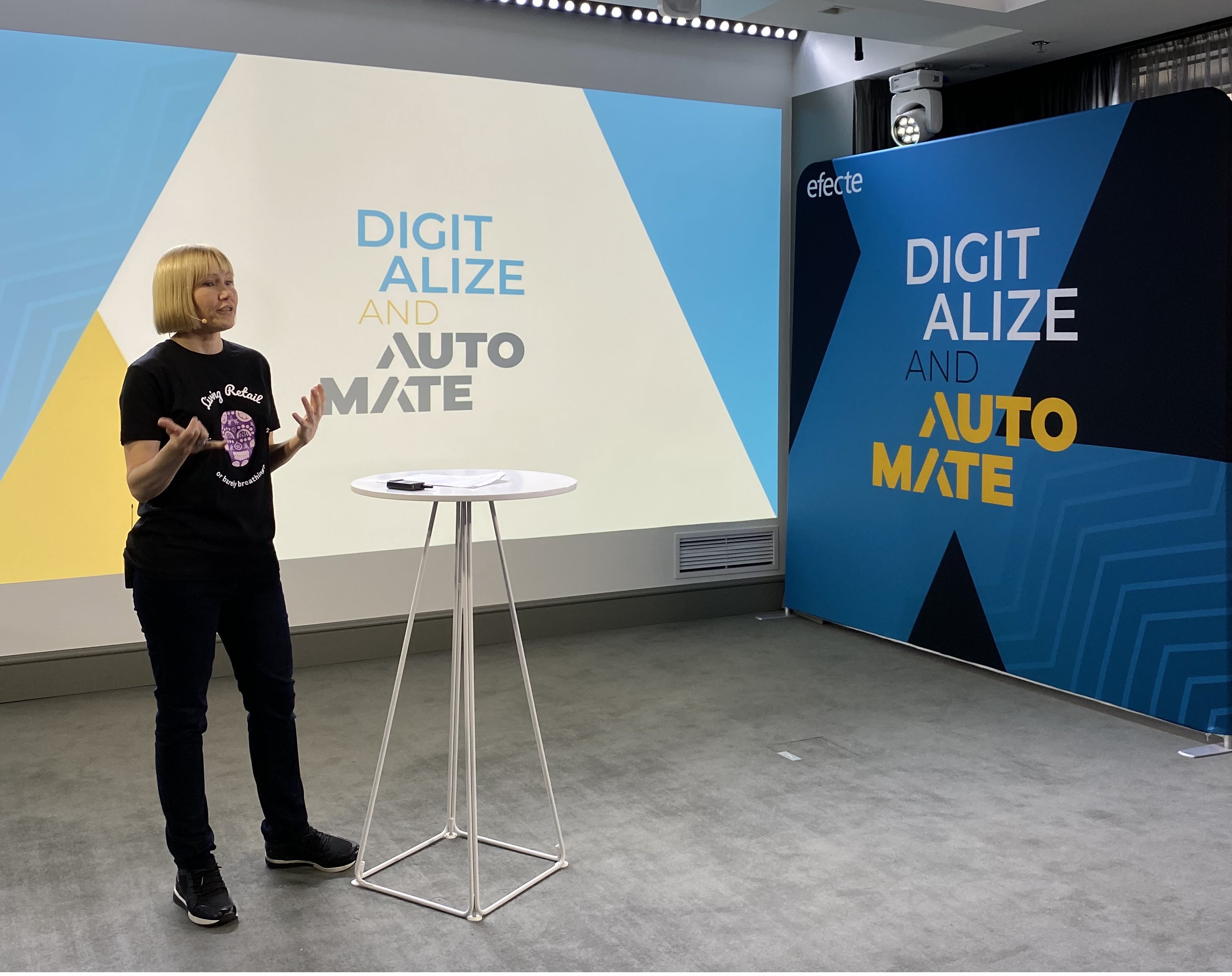
By leveraging technology in the shape of machine learning, artificial intelligence and statistical tools, Johanna highlighted that a range of positive outcomes can be delivered. “We can reduce food waste by up to 40% which is a huge sustainability improvement, and one that also creates a better service offering for customers. A nice bonus is also that we can then reduce transportation mileage of up to 20% simply by optimizing transport, loading, and storage.”
Retail is increasingly becoming a digital industry, where technology allows us to optimize goods flows all the way from the manufacturer to the supermarket shelf. “All businesses are tech businesses today,” Johanna argued. “By adopting optimization you can help workers become more efficient, do less manual labor, and enjoy predictable workload planning which helps people to create a healthy work/life balance and work the hours that they are comfortable with.” This, of course, allows the business to increase financial efficiency without sacrificing worker happiness.
Technology requirements are changing rapidly across the board, especially fueled by global events such as the ongoing pandemic. When we face these issues, we need to be able to respond fast in order to deliver solutions before they are outdated. This makes technology a positive driver for business change. “Our goal is to achieve humble world domination,” Johanna concluded. “This is something we can do by simply having the best technology, and delivering the best results.”
A New Age in European Deep Tech
Sarah Al-Hussaini is the CCO and co-founder of Ultimate.AI, and in her presentation, she shared the story of how the business became a global leader in the artificial intelligence field in just four years.
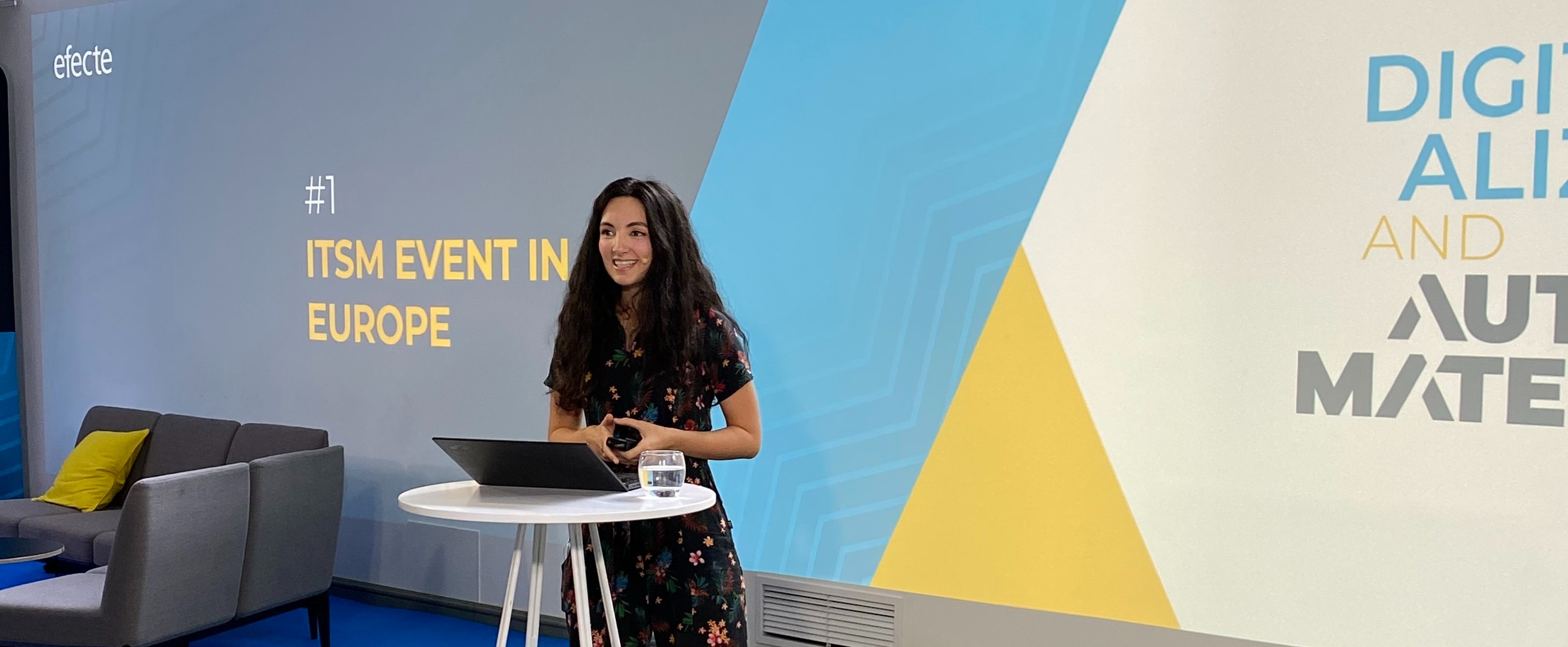
With the backing of three rounds of substantial funding, the business has rapidly grown and created the world’s best virtual agent platform. Through the automation of repetitive processes, their solution today allows human agents to focus on the more creative aspects of their work, which in turn generates work satisfaction and improves efficiency across the board.
When talking about how the business went from a completely unknown entity to a market leader in its field, Sarah discussed how Europe played a pivotal part in the founding story of Ultimate.ai. “We faced a number of challenges, but each of these has been transformed into strengths,” she explained. “We were able to look at the European issues of the fragmented market, the smaller local markets, and the language barriers, and we were able to address them in a completely new way. We established a set of European technology advantages which created unique business strengths for Ultimate.”
Ultimate.ai recognized that European languages are massively underserved when it comes to virtual communication tools. Many virtual systems are built using data from computational linguists which is in turn incorporated into algorithms. However, Finnish is too complicated for traditional rule-based systems to work, and Ultimate had no budget for an army of linguists. Instead, they had to do something new; they leveraged deep learning algorithms. “We used public language repositories to learn the rules, which allowed for fluency in any language. This allowed us to become pioneers of language-agnostic AI,” Sarah explained. This quickly attracted major Nordic brands, wanting to try the solution.
For Ultimate.ai, challenges are opportunities to innovate. Not only do unique challenges prompt unique innovations, but solving challenges through technology allows you to create solutions that are infinitely scalable. This is something that Sarah soon discovered on her Ultimate.ai journey. “There are hundreds of different ways of asking a single question, and they all need to be interpreted. Given that the average brand has 50-100 FAQs, it often takes the customer too long to do this themselves. It hurts their ROI, and they struggle to do it well – which results in poor input and poor customer service.”
Instead of outsourcing this data labeling to low-cost labor markets – which wasn’t an option for the Nordic languages anyway – Ultimate.ai used technology. A library of customer call recordings offered a treasure trove of data that AI could tap into. This would enable the system to structure up different questions and ways of expressing them. And what’s more, the virtual agents that learn from real, historical data would also adopt the ‘brand voice’ of a business. “All this meant rapid time-to-value,” Sarah explained. “In less than three weeks we could incorporate a company’s own language and voice, rather than the many months it would take our bigger competitors.”
Another key strength of the Ultimate.ai solution would become its ability to feed directly into the customer’s existing technology stack. While the company was fully aware of the fragmented market it was operating in, it didn’t have the funds to push into marketing nor the time to brand-build organically. The solution was to position the business as the first fully CRM-integrated virtual agent to automate customer contact and admin without simply being a disconnected web widget. “To do this, we needed to understand the bigger picture of the customer’s overall technology structure. This is what allows us to now be a key strategic partner and pioneer, rather than just yet another service provider,” Sarah concluded.
From Zero to a Tech Unicorn – the Story of Wolt
Juhani Mykkänen is the co-founder of Finnish food delivery company Wolt, and he used his presentation to share some of the stories of what happened behind the scenes of Wolt as the company grew from a basic back room app development project into an award-winning, world leading merchant platform.
“Wolt serves three groups of people,” Juhani explained. “There is the end customer who uses Wolt to order food or groceries, the merchant who earns money by using Wolt to sell their goods, and the courier who earns money by delivering products to the end customer. As of today, we have 150,000 restaurant partners, 100,000 courier partners, and 4,000 employees.”
The beginnings of the business were, however, very humble indeed. The idea was born in 2014, with an early prototype of the consumer app drawn on a scrap of paper. Soon, the startup consisted of a team of university dropouts and students, a brand identity was developed, and various iterations of the order-and-pick-up app were tested with customers and users. While people indeed liked the user experience, it simply wasn’t used widely enough. “The acceleration started to happen when we added delivery to the service,” Juhani explained. The company partnered with delivery partner Feddy and experienced some growth – however, the partnership was lost overnight as Feddy unexpectedly stopped operations. “This was where we needed to make a key decision. How do we move forward? We knew we wanted to continue with deliveries, so we simply established a fleet of our own Wolt couriers. This allowed us to scale the business on our own terms.”
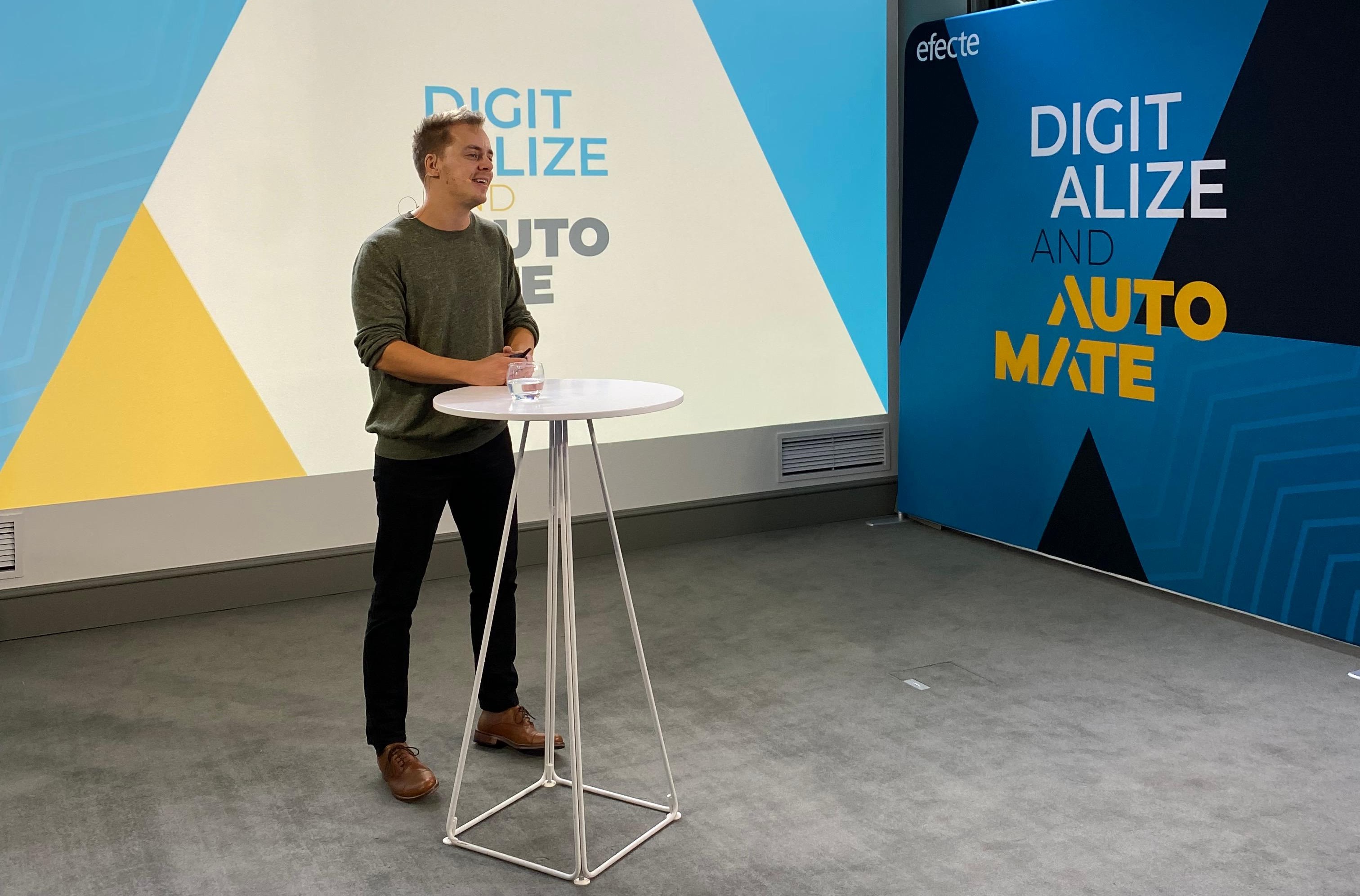
In 2016, Wolt started to experience dramatic, exponential growth. They eventually hit a growth rate of 30% week on week. This led to an expansion, investment, and an opening up of several international opportunities. The growing team set up operations in Stockholm, Sweden, followed by Tallinn, Estonia. Over the next few years, Wolt established a presence in countries like Denmark, Lithuania, Norway, Georgia, Hungary, Czech Republic, Israel, Latvia, Poland, Greece, Germany – and even as far afield as Japan.
Once a year, the event ‘Wolt One’ is arranged where everyone gets the opportunity to come together to learn, explore, and connect. This all helps to underpin a strong company culture and the flat organizational structure that all employees and partners value. In his presentation, Juhani shared a range of photos that all convey the creativity, fun, and various challenges that face a company in rapid growth and constant development.
Wolt grew into the platform economy gradually, as it became more than just an app or a singular service. Juhani described it as a learning journey. “Nobody knows from the outset exactly how things will play out, and we have learnt many lessons the hard way. However, a key part of growth is to understand that it’s all about people. A business needs to have the right people in the right role. If you fail in one area, it’s not necessarily because a person fails. More often than not, it’s the company that hired the wrong person for the wrong position.”
Panel Discussion: How Can We Grow More European Digital Platforms?
As a midway point to the day, Reidar hosted a panel discussion with several of the day’s speakers: Niilo Fredrikson, Markus Bause, Johanna Småros, Juhani Mykkänen and Sarah Al-Hussaini.
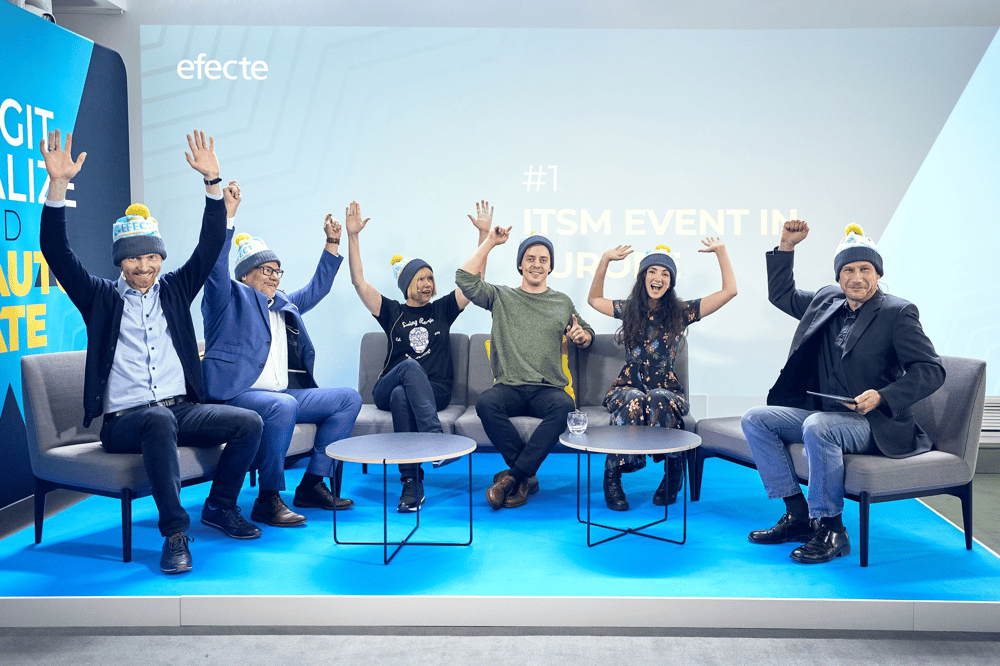
The key topic was the growth of digital platforms in Europe, but the conversation quickly flowed across into understanding the wider perspective of not just technology and digital innovation – but also how to grow the business in a competitive yet human-centric and sustainable way. This requires us to change the way we work – as well as the way we lead.
The panel discussed how growth needs talent, and how the US is delivering more technology and innovation partly because it has access to a massive job market. A Finnish startup, meanwhile, may struggle to exploit the same level of experience and skills base. However, the panel agreed, a big talent pool is not a silver bullet. We can all import talent, but often we can benefit from recruiting and training up our own people who truly understand the culture, the local markets, and who can relate to the buyer.
Reidar posed the question of what role the pandemic has played in the growth of business. Several of the panel participants have seen accelerated growth and development. As an example, Wolt found itself 6 months further down the growth curve as the pandemic became an obvious business booster and has presented an opportunity for change and digital innovation.
Relex Solutions, on the other hand, suffered a setback as the pandemic hit. Their customers withdrew from the investment while trying to resolve the supply chain and retail challenges. This year, however, the company has extended beyond the expected baseline and explains this with businesses increasingly investing in technology and innovation to recover in the marketplace.
Another conversation topic was that of partnerships – and especially those important, early partnerships between universities and business. We all exist in an eco-system where we need to build positive workplaces and create positive experiences. The mobility of Europe was hailed by the group as an incredible asset, with its cross-border business opportunities, collaboration, and the ability to move people across a huge domestic market.
The European business model is built on human-centric values, which shows in the work culture. When a Finnish company talks about work/life balance, for example, they really mean it. The panel agreed that there is an opportunity to offer great careers with benefits like parental leave and flexibility for families and personal needs, which ultimately also feeds into long-term customer satisfaction.
Do Agile vs Be Agile – What is Agility?
Markus Bause, CEO of German business management consultant firm Serview, centered his presentation around the topic of Agile. He wanted to explore how the things that made us successful in the past will not necessarily make us successful in the future, by discussing the drive towards Agile working in many different departments of modern business. But, he asked, what does genuine agility look like – and why do we need it?
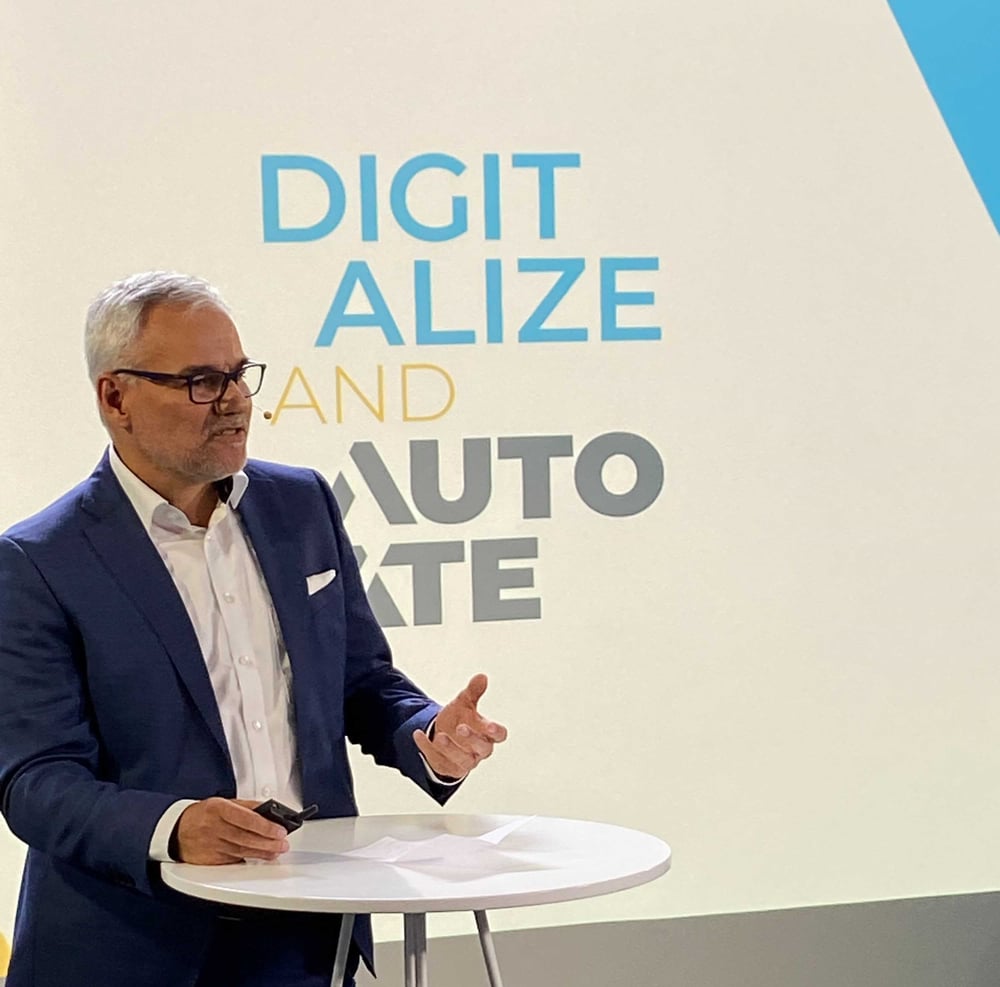
We are living in a VUCA world – Volatility, Uncertainty, Complexity, Ambiguity. Our surroundings change every day. What is true today is not necessarily true tomorrow. This concept was coined by the US Army to understand our environment and react faster to the changing nature of our environment. “It’s becoming increasingly difficult to plan,” Markus claimed. “We can’t plan for 3-5 years anymore. This of course relates to IT, but also to the business as a whole. We constantly have to react to what’s happening around us. We must establish more flexibility in our IT systems, our business operations, and our service management.”
Agility, Markus argued, doesn’t mean working faster. It means focusing on what’s needed right now, to take the next step. It requires commitment and responsibility, where everyone needs to take ownership of their own progress and to be self-organized.
“Establishing practices and adopting methods – that’s the easy part. But we won’t see a significant change until we introduce matching principles, and translate those into values. Once the values are ingrained in the organization, change and improvement happen naturally. These two steps require structural and cultural change, and when done successfully this leads to a mindset that is fully geared towards the new way of working.”
It’s not about books and training, or purely ‘doing’ agile, Markus concluded. Being agile requires leadership and an investment in people and culture. Tools such as Kanban boards, daily scrums, and sprints may bring up to 20% benefit to an organization. An agile mindset, on the other hand, along with intent-based management, can bring endless benefits and truly transform a business for the better.
How Companies are Doing Remote Work All Wrong
Hannes Kleist is the Managing Director of Fooxes Consulting. He has been 100% remote for the past 14 years, and true to the style, he joined the day via remote video link. Hannes currently leads a team of 40 people and has learned a great deal about key work principles from experience that dates back to long before the pandemic drove many businesses to home-based work models.
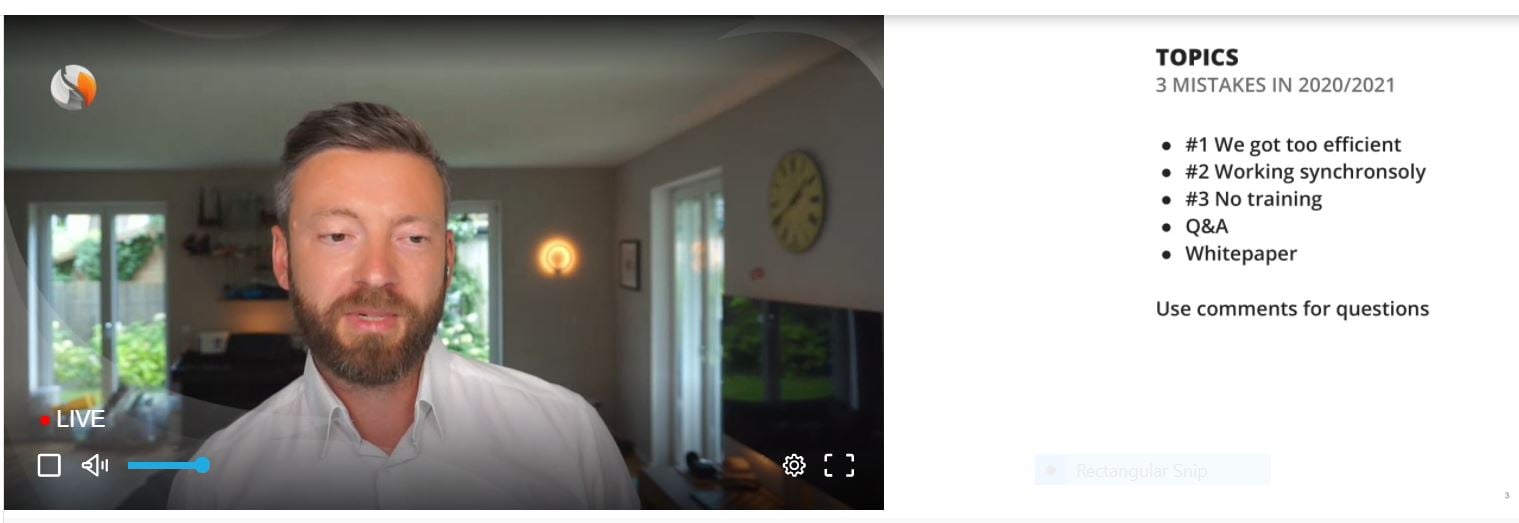
In his presentation, Hannes brought up three key mistakes that companies make when operating remotely, and shared a few tips on how to address them. “The first problem,” he claimed, “is that we essentially become too efficient when we work from home. There is such focus on getting things done, and it leads to many of us having up to 80 meetings per week – and we are constantly on various digital communication systems. We get more things done, but the workday gets longer and our stress levels soar.”
A well-functioning remote model is stress-free, according to Hannes. It requires motivation, and ideally the kind of motivation that comes from doing fulfilling and enjoyable work. A simple way of highlighting this to ourselves can be to write down a daily log of ‘what I learned’, ‘whom I helped’, and ‘what I initiated’. By looking out for these things and reflecting on them, we can start noticing them and consequently become happier at work.
Perhaps surprisingly, Hannes also advocates taking every possible opportunity to meet in person. “The key to successful remote work is actually to be a little ‘remote’ as possible,” he claimed. “Zoom calls are great, but we all need to connect with other humans and the world around us. And sometimes the best thing we can do is to leave the house.” He gave the example of how walking meetings are an excellent solution as it provides a health benefit as well as a way of breaking up the day.
The second problem Hannes pointed out is synchronous work. This is where we are expected to collaborate by being reactive to activities and requests in real-time. It can lead to a sense of missing out on important conversations, and it often means there is little or no time for ‘deep work’ and for phases where you can be truly concentrated. “A good way of battling this is to avoid using messenger tools for discussions,” Hannes explained. “They’re great for brainstorming, quick Q&As, blog-style posts, and non-critical information. But they’re not designed for long, real-time conversations.”
Hannes also advocates various other collaboration tools such as shared documents, and Trello or other project management systems that allow people to concentrate on what they need to do without having to sit on a call. “Instead of the classic morning stand-up meeting which can be disruptive or difficult to schedule – especially across time zones – we take an asynchronous approach. We use status boards where everyone gets a chance to write their updates when they can, without the rest of the group having to be online at the same time,” Hannes clarified.
Hannes also highlighted the fact that most companies fail to provide training for remote working. It’s important to teach people how to defend themselves against unnecessary interruptions, and how to work in a focused and structured way. He recommended reducing the daily noise by removing all notifications, uninstalling social media apps, and setting up regular email summaries. “If we get pulled into Slack conversations every 15 minutes, we inevitably lose focus,” Hannes explained. “For anything that requires concentration, we should allow a minimum of 30 minutes of uninterrupted work.”
The final, impactful tip from Hannes was to ‘kill your to-do list’, and not allow your happiness to be defined by what you achieve. “Your list will always be longer than you have time for,” he stated. “Instead, learn to prioritize well, and block out time in your diary and commit to dedicating your time to a task rather than depend on ticking it off on a list. This makes you happier in the long run.”
Efecte as the European Alternative in ITSM
In the closing statement of the day, Niilo Fredrikson again took center stage. This time he highlighted how Efecte serves customers and partners on their digitalization journey, making businesses more agile and enabling them to improve experience while lowering costs.
Niilo also offered some breaking news in the form of Efecte joining the European cloud initiative Gaia X. This collaboration supports the next-generation data infrastructure in Europe, in a unique pan-European initiative serving to create an open, transparent information ecosystem.
He also offered a sneak preview of the all-new Efecte Self Service solution, creating a new consumer-like experience for business users.
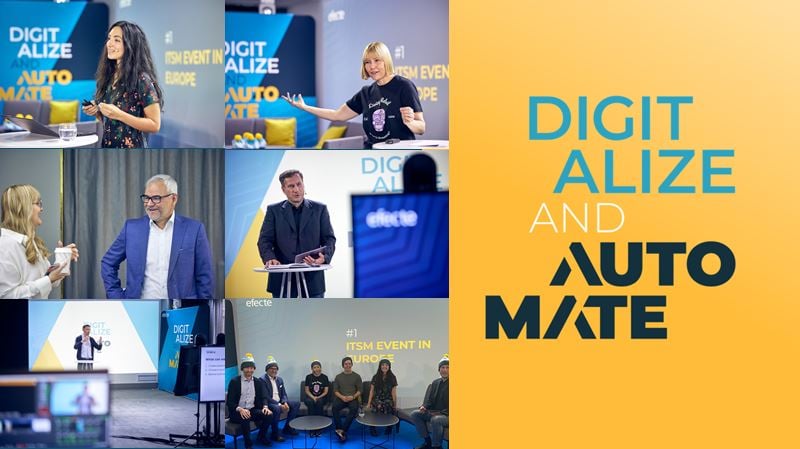
This summarizing session served as the perfect segway into Day Two of the Digitalize and Automate event, which will offer a much deeper insight into the technology aspect of how to innovate to grow Europe’s footprint on the international stage – as well as more information on the latest Efecte innovation on the global stage of AI and ‘digital superpowers’.
We look forward to seeing you for another exciting day of content!
Read Digitalize and Automate 2021 Day 2 recap here:
Digitalizing and Automating Services – Day 2 of Digitalize and Automate
Curious about Efecte? Visit www.efecte.com/free to find out more and try Efecte's ITSM and IAM solutions for free.
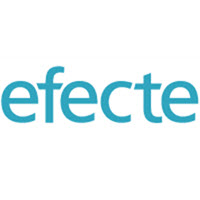
Written By - Efecte
Recent blog posts
From Vision to Reality: How Our Annual Event is Shaping the Future of Service Management
September 9, 2024
In the rapidly changing world of service management, one thing has remained stable: the need to stay ahead of the curve. For the past three years,..
We implemented AI in our Service Desk: Here is what we found.
April 29, 2024
At Efecte, we often preach the benefits of AI for Service Management and we firmly believe in practicing what we preach. We have already talked about..
Will AI replace the Service Desk Agent?
April 2, 2024
The work of service desk teams is increasingly demanding, partly due to the higher complexity of the topics they address. Without more advanced..


